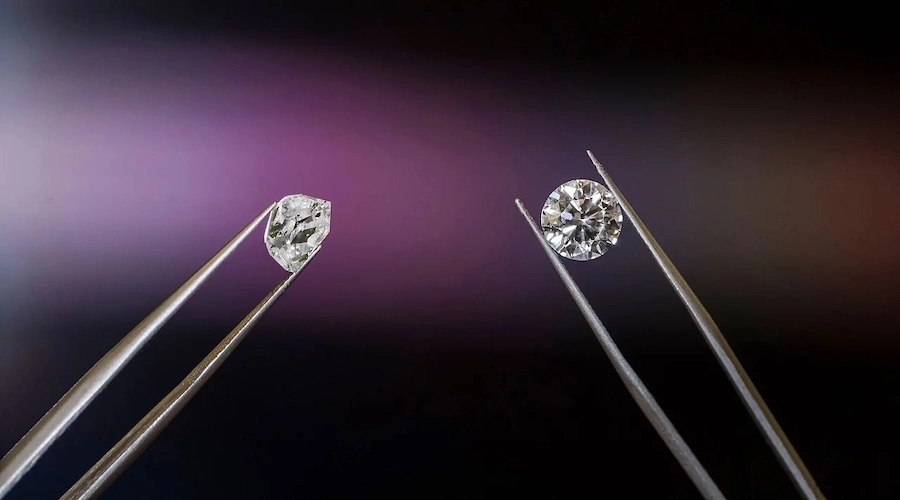De Beers Group announced late last week that it will be suspending production of diamonds for jewelry at its Lightbox factory in Gresham, Oregon, pivoting instead to industrial diamonds for technology applications.
The company made the announcement Friday, in the midst of the Las Vegas jewelry trade shows.
The lab-grown pivot is part of a broader new strategy called “Origins,” which is designed to grow desire for natural diamonds while cutting costs.
In an interview with National Jeweler on Friday, De Beers CEO Al Cook elaborated on the decision, including on the future of Lightbox, the lab-grown diamond jewelry brand De Beers launched six years ago.
“Element Six used to produce diamonds because they were hard and they could be used industrially,” he said. “Now, with the price of synthetic diamonds coming down, it opens up this amazing set of technological activities. We’re in partnership with … a number of high-tech companies looking at how you use diamonds as components in the digital era.
“That bit for us is really exciting. And that’s where the future of synthetic diamonds lies for us.”
Despite the transition at the factory, Cook said Lightbox will continue as a brand, drawing upon existing stock for the immediate future.
“At the moment, we’ve got a lot of stones available to Lightbox. Production will continue for a few months to ensure that they’ve got a stock of beautiful lab-grown diamond stones they can sell.”
After Lightbox depletes its existing stock, “we’ll see where the brand goes and we’ll see what happens,” Cook said. “I think it’s too early to say.”
De Beers announced the launch of the Lightbox lab-grown diamond brand during the Las Vegas shows in 2018.
At first, De Beers was growing the diamonds for Lightbox at its Element Six facility in the United Kingdom.
In October 2020, it opened its $94 million Lightbox factory in Gresham, a Portland suburb.
In an attempt to control the direction of the lab-grown diamond market, De Beers set an $800/carat price structure for the line.
It also marketed Lightbox as jewelry for less-special special occasions, like Sweet 16s or graduations, not milestones like engagements or anniversaries, which, it posits, should be celebrated with natural diamonds.
Since the line’s launch six years ago, lab-grown diamond prices have dropped precipitously. Lightbox cut its prices by as much as 40 percent last month.
Cook said De Beers expects the trend to continue.
“For a lot of retailers out there, the incentive to sell natural [diamonds] and the incentive to sell lab-grown are reversed. There was a period of time, a year-plus ago, when retailers got more of a margin sometimes from selling lab-grown diamonds.
“They were cheap to manufacture, and they could be sold as near-equivalents to natural diamonds. We didn’t do that in De Beers Group. We made very clear through Lightbox that these were two entirely different propositions,” he said.
“Not everyone followed our approach. It is now very clear that for all the retailers I can speak to here at JCK, the margin you get by selling a natural diamond is far greater than the margin that you get by selling a lab-grown diamond. It’s also clear that the gap is going to grow rather than shrink. We expect the price of lab-grown diamonds to go down and down, to continue collapsing.”
As it transitions production at the Lightbox factory in Gresham, De Beers announced Friday that it also will be consolidating its Element Six chemical vapor deposition (CVD) diamond-growing facilities, going from three factories to the one factory in Oregon.
Source: DCLA








